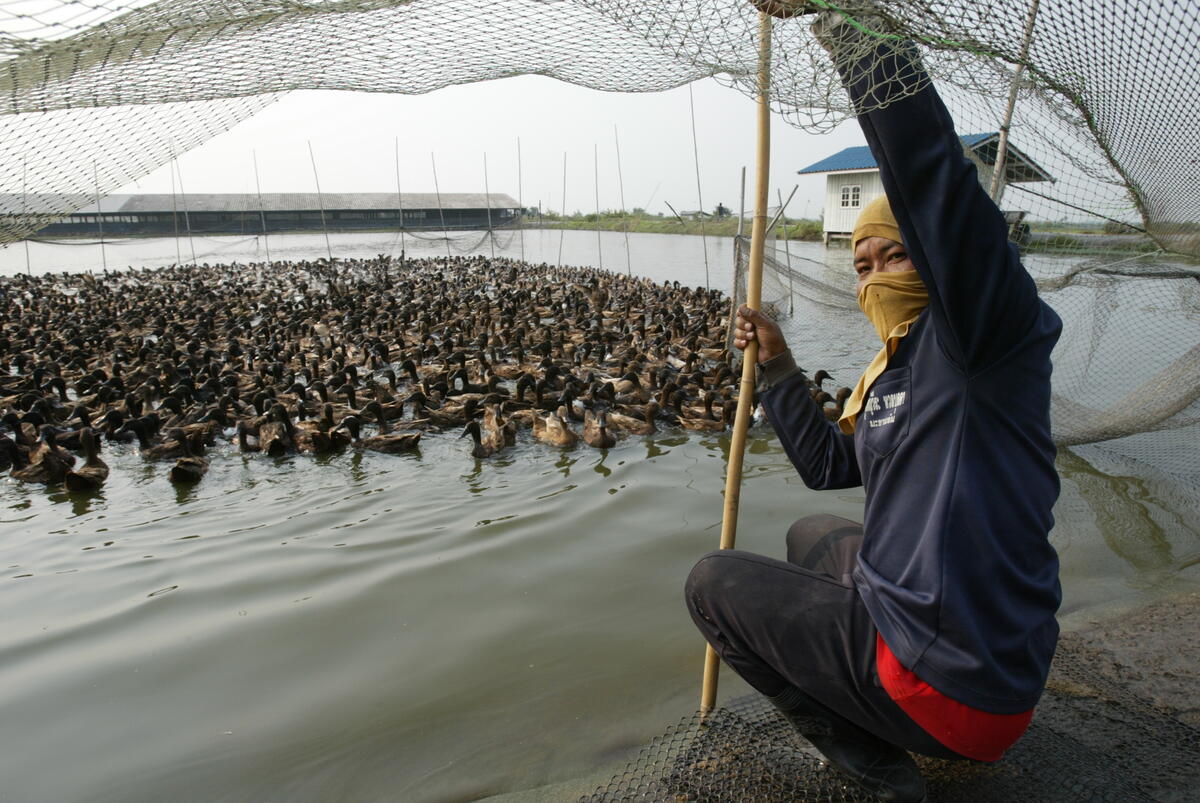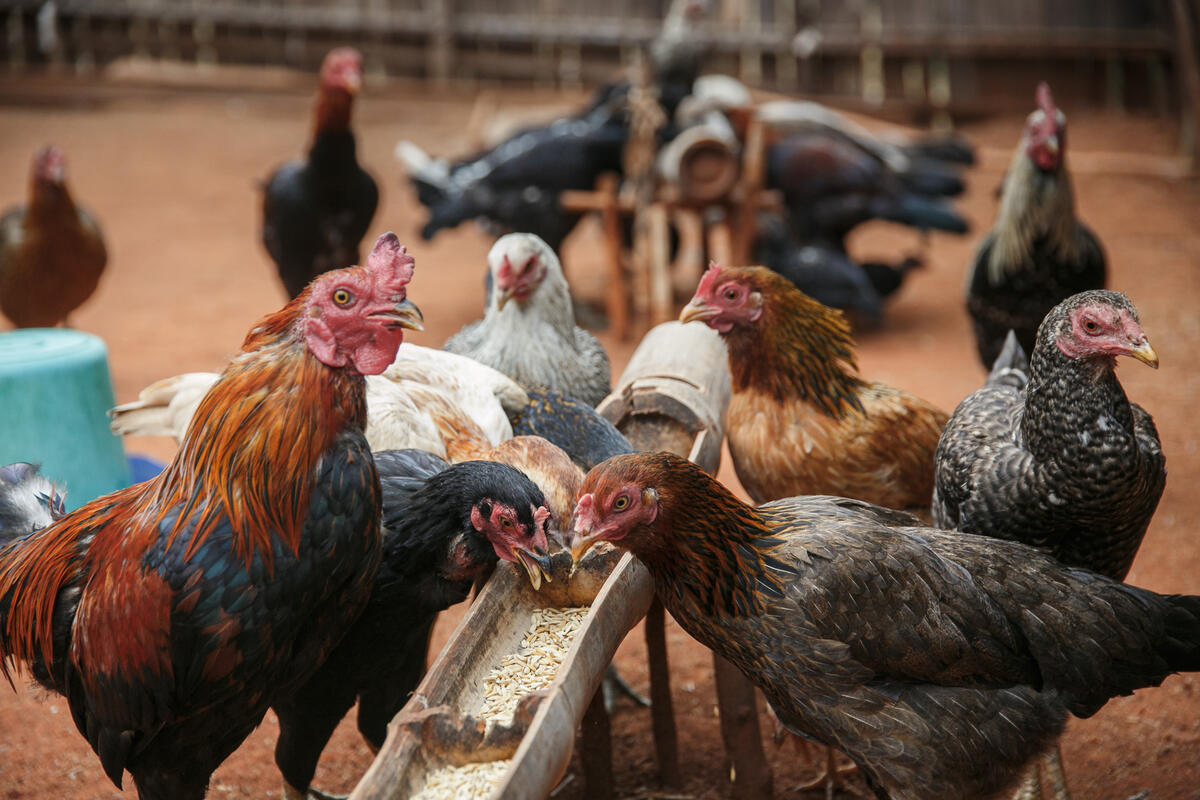Highly pathogenic avian influenza (HPAI) is a highly contagious transboundary disease with zoonotic potential affecting both animal and human health. It causes variable clinical signs and high mortality rates in both wild and domestic bird populations. Current H5 AI outbreaks have severely impacted countries globally, causing losses of rare and important wild bird species, as well as significant social and economic costs, including livelihood losses and egg shortages.
The spread of HPAI also strains poultry-related businesses, as measures such as culling and movement restrictions are necessary to contain the virus, which can disrupt the trade of poultry products. The ongoing devastation highlights the urgent need for improved control measures to prevent spillover and viral changes that could lead to a global pandemic. HPAI also infects mammals and humans, posing serious public health risks. Infected mammals include domestic cats, cattle, and wild animals such as foxes and seals, with human cases, although rare, occurring in those with close contact with infected poultry or environments.
Addressing these challenges requires a robust One Health approach. The FAO’s One Health Programme Priority Area (OHPPA), specifically the Better Production 3 (BP3) program, focuses on enhancing productivity and mitigating zoonotic infections risks like HPAI. It aims to strengthen early warning systems, improve biosecurity measures, and enhance preparedness and response to food chain emergencies. By promoting sustainable and inclusive food and agriculture supply chains, BP3 helps ensure resilient agrifood systems, while mitigating the impacts of HPAI.

Just released
Updated joint FAO/WHO/WOAH assessment of recent influenza A(H5N1) virus events in animals and people. Assessment based on data as of 18 July 2024 (14 August 2024)
During 2020, high pathogenicity avian influenza (HPAI) A(H5N1) clade 2.3.4.4b viruses arose from previously circulating influenza A(H5Nx) viruses and spread predominantly via migratory birds to many parts of Africa, Asia and Europe. This epizootic event...
Featured publications
News

news
Consolidating expertise to strengthen global preparedness for animal influenza
With highly pathogenic avian influenza (HPAI) continuing to have global impacts and increasing reports of spread to mammals including cattle, the joint WOAH/FAO Network of Expertise on Animal Influenza (OFFLU) recently convened a global technical meeting at FAO headquarters in Rome, Italy.

news
Marking two decades of multilateral efforts in transboundary animal disease control
On 24 May, we commemorate the 20th anniversary of GF-TADs and the significant milestones achieved in enhancing animal diseases surveillance and reporting mechanisms.
How FAO supports
Since 2004, FAO has been working globally to tackle avian influenza (AI), focusing on effective disease control and the crucial role of biosecurity. FAO promotes awareness and good practices along the poultry value chain, while supporting the improvement of laboratory diagnostic capabilities, biosecurity, and biosafety through the One Health approach.
In collaboration with FAO/WOAH Reference Laboratories and partner organizations, FAO continuously monitors and assesses the evolving disease situation. This includes risk monitoring, evaluating virus characteristics, providing laboratory protocols for detection, and disseminating essential epidemiological and virological findings. FAO issues regular disease situation updates on key transboundary, epidemic, and emerging diseases. These updates include newly observed outbreaks, epidemiological analysis, relevant publications, technical guidance, One Health recommendations, and updates from FAO field projects.
To assist countries affected by and at risk of AI, FAO offers recommendations for preparedness, prevention, and response. The organization contributes to risk assessment and mapping efforts to identify hot spots, support data-driven risk mitigation strategies, and implement targeted surveillance strategies.
Through the WOAH/FAO Network of Expertise on Animal Influenza (OFFLU), a collaboration with the World Organisation for Animal Health (WOAH), FAO supports and coordinates global efforts to prevent, detect and control major animal influenzas, and collaborates on influenza pandemic preparedness and risks assessment collaboration with WHO. OFFLU works as a global open network of FAO/WOAH Reference Centres and leading experts in diagnostics, epidemiology, virology, animal production, veterinary medicine, and vaccinology. Its strong institutional links and participatory nature make it a robust mechanism for information exchange between human and animal health sector specialists and stakeholders.
Did you know?
⦿ HPAI virus has spread worldwide and become endemic in poultry populations in many countries.
⦿ Since 2003, HPAI has led to the culling of hundreds of millions of birds worldwide to control outbreaks.
⦿ Outbreaks of HPAI have caused billions of dollars in economic losses due to the death of poultry, trade restrictions, and control measures.
⦿ The most notable subtypes of HPAI include H5N1, H7N9, and H5N8.
⦿ Surveillance and monitoring are essential for early detection and response to HPAI outbreaks.
Situation updates
Questions and answers

Q&A to explain the challenge of avian influenza outbreaks and how FAO works to contain it.
Introduction to Avian Influenza: self-paced course

Tailored for vets, veterinary paraprofessionals, and industry experts, this course provides crucial knowledge on global impact, detection methods, and prevention strategies.
Related links
Early warning and disease intelligence
Biosecurity in terrestrial animal value chains
Emergency Prevention System for Animal Health (EMPRES-AH)
FAO Emergency Centre for Transboundary Animal Diseases (ECTAD)
Global Framework for the Progressive Control of Transboundary Animal Diseases (GF-TADs)
FAO/WOAH Global network of expertise on animal influenza (OFFLU)
Progressive Management Pathway for Terrestrial Animal Biosecurity (FAO-PMP-TAB)

-influenza-in-dairy-cattle-in-the-united-states-of-america.png?sfvrsn=666a06f5_1)
-in-brief.png?sfvrsn=c4055053_1)


